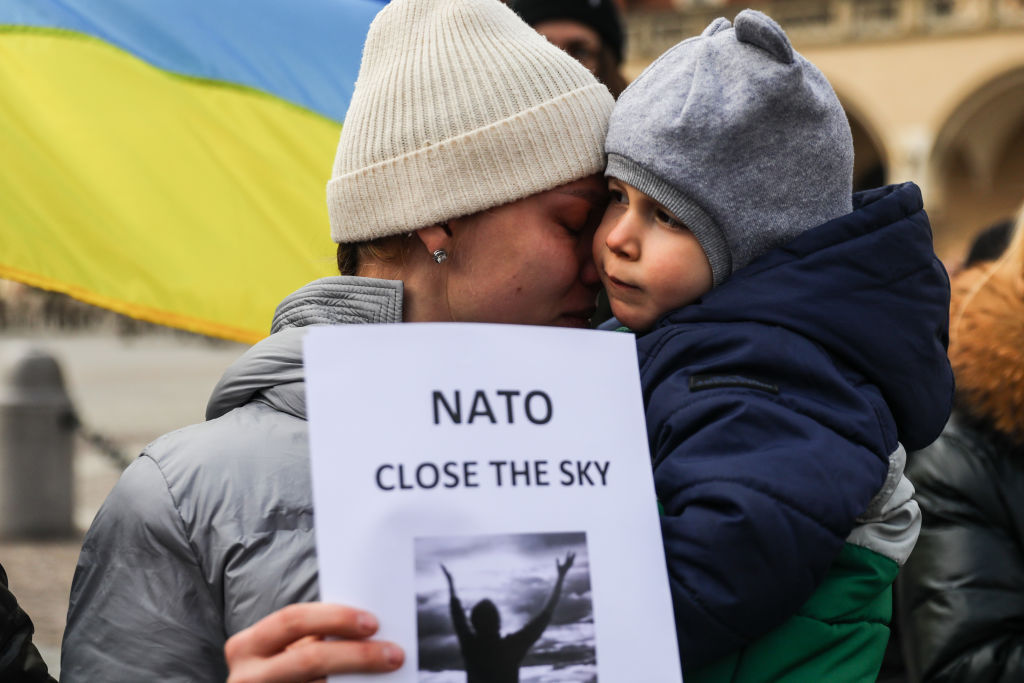
The Russian invasion of Ukraine and the awful scenes of human suffering accompanying it are understandably prompting many to ask what more can be done to respond. Ukrainian President Volodymyr Zelensky has been making loud calls for NATO to impose a no-fly zone over his country, a call thus far rebuffed. The rejection of that call pivots on the very legitimate concern that a war between the US and NATO on one side and Russia on the other would most certainly be worse than a war between Ukraine and Russia.
A generation since the end of the Cold War, the level of literacy about the risks of a shooting war between nuclear powers is such that articles can be published in support of a no-fly zone that don’t once mention nuclear weapons, and simplistic explainers are published outlining ‘Why the US won’t fight in Ukraine’.
Of course, the US and Russia are aware of the escalation risks. ASPI’s Rod Lyon has made the point on this site that nuclear issues have thus far ‘enjoyed a much higher profile than might have been expected’. Russian President Vladimir Putin’s decision to place his own deterrent on a ‘special regime of combat duty’ was the first explicit use of nuclear forces as a signalling device in this crisis, though it’s unclear exactly what that decision entails. The US flew B-52 bombers over Eastern Europe earlier this month. And a military hotline has been established between the Pentagon and Russia’s defence ministry to prevent ‘miscalculation, military incidents and escalation’ in Ukraine, though exactly how this hotline is operating is not clear.
We should be deeply concerned with the possibilities for inadvertent escalation in this crisis. That is, we should be concerned about actions taken, deliberately and carefully calibrated, that might nonetheless cross a threshold in the mind of Putin and Russian military leaders and lead to undesired escalation. We should also be worried about accidental escalation, the product of something that could genuinely be considered an accident, like a targeting or navigational error.
So, to the possibility of a no-fly zone. The potential thresholds appear clear at first but quickly become foggy. How would the Russian leadership respond to a NATO downing of a Russian aircraft? At the very least they would be likely to then target NATO aircraft operating over Ukraine.
But would it be possible to enforce a no-fly zone at an acceptable level of risk to NATO aircraft by only targeting Russian aircraft in Ukrainian airspace? Or would it be necessary to target support systems or Russian surface-to-air missiles based just over the Russian or Belarusian border? Likewise, can it really be expected that the Russian response would be so geographically limited? Or would Russia target early warning or reconnaissance aircraft flying just beyond the Ukrainian border? What about airbases within missile range? And where would escalation lead once those thresholds were crossed in turn?
The fog thickens once you consider the mechanics of a no-fly zone in more detail. Those in the West calling for this option must address these concerns. It seems unlikely, however, that the Biden administration’s clear stance against this possibility will change given the profound risks built into it.
Little discussed so far has been the messy escalation risks inherent in a potential Russian occupation of Ukraine, either whole or partial (say, partitioned along the Dnieper River). Official sources from NATO countries are, of course, refraining from openly discussing this eventuality while Ukraine continues to offer fierce resistance to the Russian assault. Brief anonymous statements suggest that officials in the US and elsewhere are considering what a government-in-exile and continued Ukrainian resistance would look like in such circumstances.
There will doubtless be much more said about what a Ukrainian insurgency in the case of Russian occupation might involve—and there are a range of possibilities.
Insurgencies often rely on safe havens and external support. We can expect that an ongoing Ukrainian resistance will seek external financial and material support, much as the Ukrainian government is currently doing. The insurgents resisting a Russian occupation can also be expected to seek to use—with or without the blessing of the governments in question—cross-border safe havens in NATO countries like Poland and Romania. In these places they might expect to be able to organise, rest and prepare free from the risk of Russian attack. It’s an open question how Russia might respond to such a situation. Would it accept this as a reality of an occupation or might it attempt to act against borderland safe havens in the belief that NATO wouldn’t respond? How would NATO respond?
There is a gamut of escalation pathways not discussed here that will presumably be preoccupying Western intelligence agencies. Potential routes from Western economic sanctions to retaliatory Russian cyberattacks or other measures are one, should those sanctions be truly crippling and cause serious problems for the Russian regime domestically.
Our lack of a good understanding of how decisions are being made in Moscow complicates any analysis. The bizarre aesthetic of Putin publicly dressing down his senior deputies and the haphazard progress of the first weeks of the Russian invasion, reportedly contrary to Russian expectations, are worrying indicators about the nature and quality of advice and decision-making surrounding the Russian leader.
It’s right that voices across the political spectrum continue to ask what more can be done to aid Ukraine. This discussion must also be imbued with an understanding of the potentially catastrophic escalatory risks.

